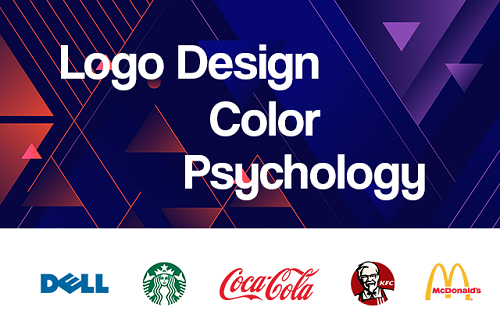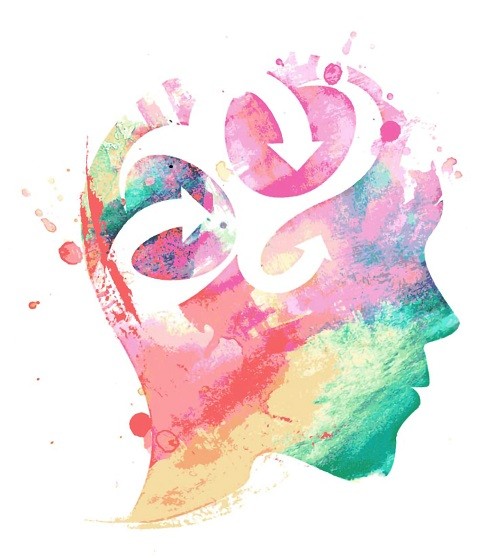By Ramsha Irfan on Mar 28, 2023

Color is a very powerful design element. Colors can influence the mood of people and how they react to your products and services. Certain colors are popular with certain industries.
When designing a logo, the color scheme is an important aspect to consider. The colors you choose influence the mood of your audience and affect how people perceive your brand.
What separates good logo design from great logo design? Research shows that color plays a crucial role in influencing consumer behavior.
Most business owners pay a lot of attention to the influence of logo design color on potential customers, but they fail to understand the deeper reason for its importance as they focus on the business-conducting aspect and fail to see the effect of color on the target audience.
In this article, we will discuss the effects of logo design color on the human mind and behavior.

Color can evoke emotion, create mood, and influence our perception. Color psychology is a branch of psychology that studies how color affects human behavior, cognition, and affect. This field is also known as chromo-psychology or color therapy.
For example, brown, orange, and yellow tones in Photography Logo Design Services can convey a sense of creativity, warmth, and natural beauty.
Color can be used to increase brand recognition, convey emotions and moods, or express a product’s personality. It can also guide people's attention when trying to communicate a message quickly (e.g., traffic lights).
Bakery Logo Design Services can also emphasize homeliness, comfort, and sweetness by using warm and inviting colors such as pink, brown, and orange. It is also possible to evoke hunger and excitement using bright and bold colors while elegance and sophistication can be conveyed using muted pastels.
Color affects perception in two ways: cognitively and emotionally. Cognitively, colors have different associations with different emotions — for example, red is associated with excitement or anger, while blue is associated with calmness or sadness. Emotionally, colors also have different effects on mood — for example, orange can make people feel energetic or excited.
Color affects perception both consciously and subconsciously.
You might know that red is associated with excitement and anger and associate it with those feelings when you see it used on products or packaging.
However, you may also subconsciously feel those emotions just by seeing red because of the association between red and excitement/anger that has been built up over time from previous experiences with red things (e.g., hearing about someone getting angry).
Color psychology is a fascinating topic. It's the study of how colors affect people. There are many different theories about what each color means, but this one is my favorite.
Yellow is associated with happiness, brightness, and optimism. It also has a calming effect, so if you're feeling anxious or stressed out, try surrounding yourself with yellow objects like flowers or pillows.
Red is associated with energy, passion, and love (the romantic kind) but sometimes anger. Red stimulates the senses and increases your heart rate and blood pressure. This makes it perfect for exercising because it can help keep you motivated!
Blue is often associated with calmness and serenity. It's also associated with trustworthiness, loyalty, and dependability, which makes it great for your business logo or branding identity.
Purple is associated with spiritual growth and renewal because it combines red's energy with blue's calmness. It can also be used as a sedative to help relieve stress or insomnia if you're having trouble sleeping at night due to overactive thoughts racing through your mind all day long!
Green represents nature and balance because of its association with life itself (we need oxygen from plants to survive).
Using color psychology in logo design can be seen in the following examples:
Starbucks uses green to represent nature and the environment, while white represents purity. The combination of these two colors creates a sense of balance, harmony, and unity. The green color is also used extensively in their branding and marketing campaigns to represent freshness and growth.
Reference Link: https://www.crowdspring.com/blog/starbucks-logo/
KFC is the world's most popular chicken restaurant chain.
In KFC's logo, a red block letter K is surrounded by a white circle with two letters "F" and "C" next to each other at the bottom. KFC stands for Kentucky Fried Chicken.
The color red in this logo represents energy, passion, love, anger, desire, or blood. It also represents power and dominance. Red is first associated with heat or fire, which implies hunger or thirst, especially when combined with yellow to create orange, which is why it appears on so many food packaging labels, including those for snacks like potato chips or even beer bottles.
Reference Link: https://blog.logomyway.com/kfc-logo/
A great example of a brand that uses color psychology in its logo design is Dell. They use blue as a dominant color because it represents trust, loyalty, and safety. Throughout the years, the company has built a strong brand image because of its use of blue as the main color in its logo.
Reference Link: https://brand.delltechnologies.com/brand-guidelines-color/
Logo design services use color psychology to create logos that effectively communicate the brand's message and values to its target audience.
So how do you incorporate color psychology into logo design? Here are five tips:
The first step in creating a successful logo is knowing who your target audience is — and what they like. If you're getting Fashion Brand Logo Design Services, then you probably don't want to choose bright neon colors because kids tend to prefer more muted tones like browns or greens.
A good place to start is by looking at your company's mission statement or value statement. If you don't have one, write down what makes you unique as a business and use that as your guide when choosing colors for your logo.
One of the most common mistakes designers make when choosing colors for their logos is using too many different shades within their designs. This creates visual confusion and makes it harder for viewers to take away any meaning from your logo design other than "it has lots of colors."
The human eye is drawn to contrast, so consider using contrasting colors in your logo. For example, if you're designing a retail store logo, try using warm colors (reds, oranges) on top and cool colors (blues, greens) on the bottom.
Color theory guidelines are just that — guidelines — so don't be afraid to break them! If there's something about your design that doesn't feel right no matter what color combinations you try out, don't be afraid to experiment until it does feel right!
Color psychology is vital in shaping consumer behavior and should be considered when designing a logo. Logo design services should understand their target audience and choose colors that reflect the brand's personality and values.
By incorporating color psychology into the logo design, businesses can create logos that effectively communicate their message and values to their target audience. This article's examples of successful logos show how color psychology can create memorable and iconic logos in the fashion, photography, and baking industries.
Ramsha is a talented writer known for top-quality content on trending topics. Her excellence in research enables her to add value to businesses by driving online traffic with engaging and persuasive content.